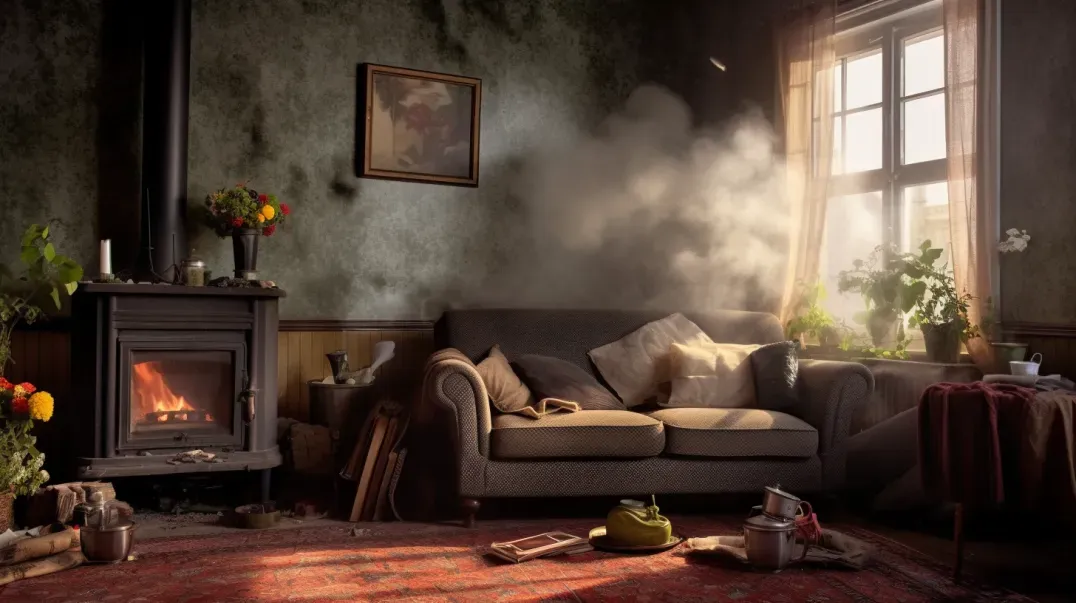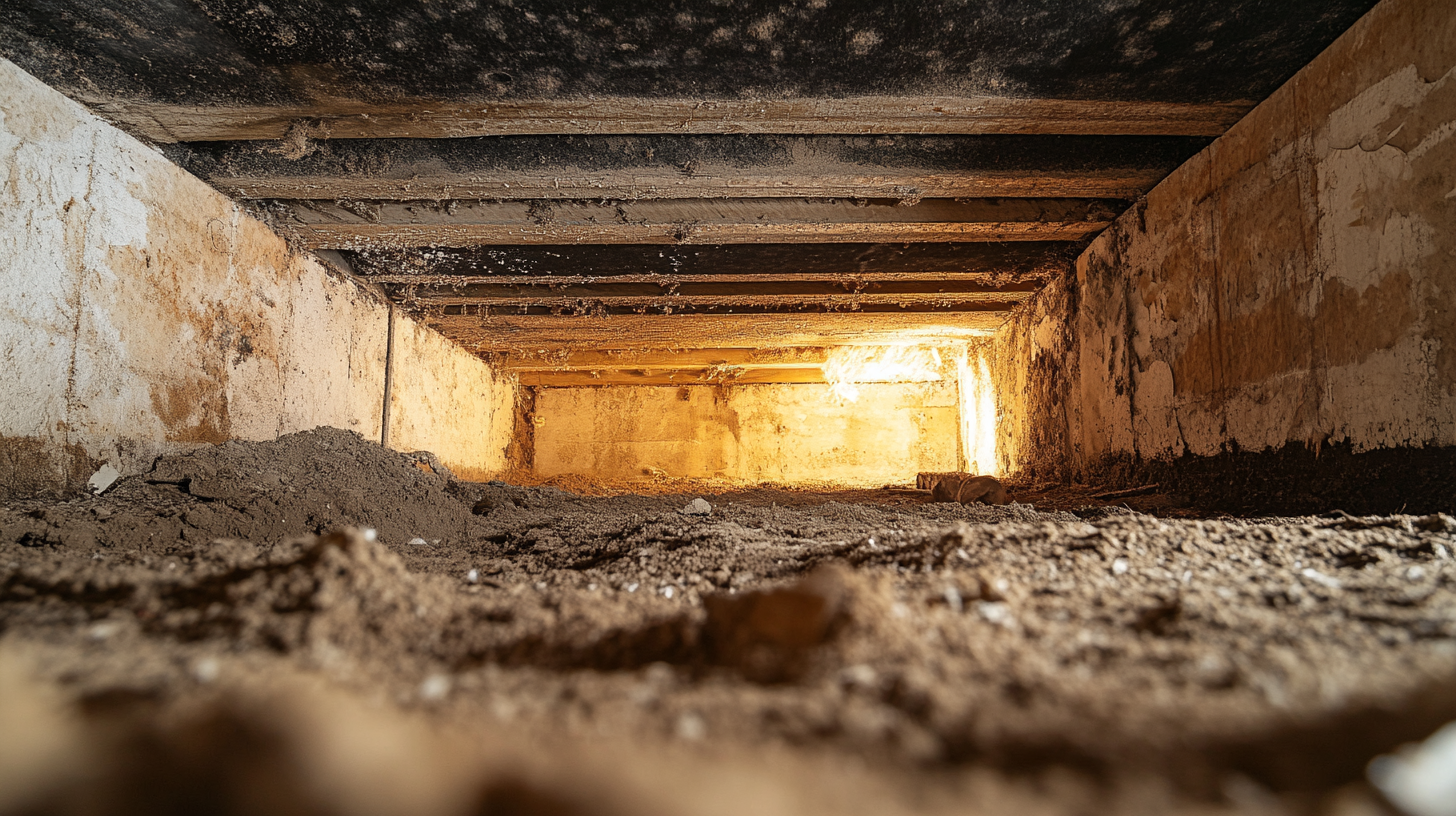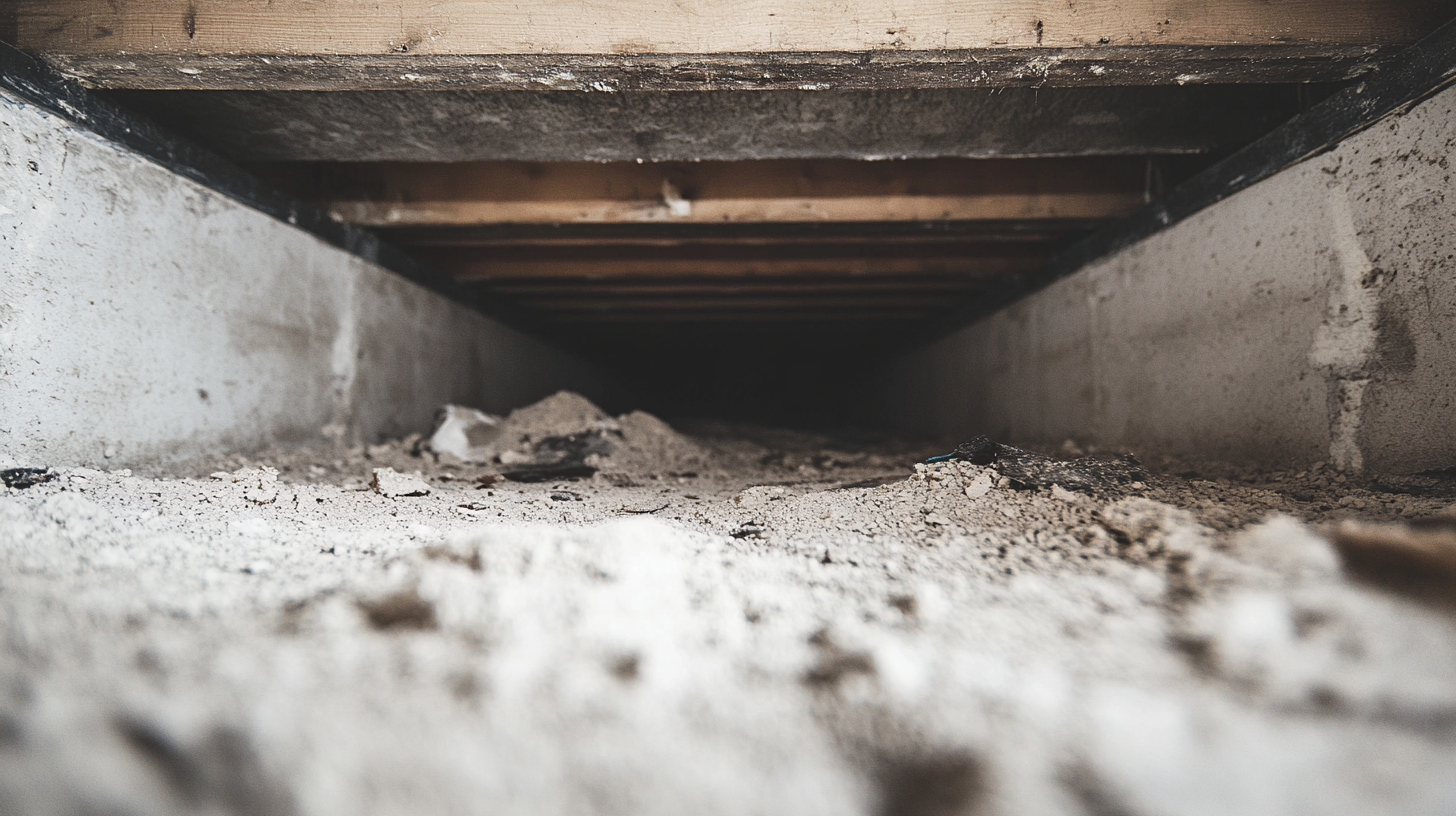Soot Cleaning Safety: Protective Gear and Best Practices

Soot cleaning, a seemingly straightforward task, is fraught with hidden dangers that can pose significant health risks and property damage if not approached with caution and knowledge. This fine particulate matter, a byproduct of incomplete combustion, clings to surfaces and air within affected environments, presenting challenges not only in its removal but also in the potential health implications for those involved in the cleanup process.
In this comprehensive guide, we delve into the lesser-known risks associated with soot cleaning, drawing upon the latest research and insights from health and environmental experts. Our aim is to shed light on the complexities of soot removal, highlighting the importance of understanding the potential hazards to ensure the safety of individuals and the preservation of property. From the chemical composition of soot that can affect respiratory health to the proper protective measures and cleaning techniques that mitigate these risks, this article serves as an essential resource for homeowners, property managers, and cleaning professionals alike.
By exploring the intricacies of soot and its removal, we equip you with the knowledge needed to tackle this challenge safely and effectively, ensuring that you are prepared to protect both your health and your property from the hidden dangers of soot cleaning.
Understanding the Risks of Soot Exposure
Soot, a byproduct of incomplete combustion, consists of tiny carbon particles that can pose significant health and safety risks if not handled properly. While soot removal is crucial for maintaining clean and safe environments, especially after fire incidents, the process of cleaning soot-covered surfaces can expose individuals to potential hazards. This section aims to shed light on the risks associated with soot exposure and the safety challenges during the cleaning process, providing essential information to ensure the well-being of those involved.
Health Hazards of Soot
Detailed Information on the Health Risks Posed by Soot Particles
Soot particles, due to their microscopic size, can easily be inhaled, penetrating deep into the lungs and even entering the bloodstream. This can lead to a range of health issues, including respiratory problems, cardiovascular diseases, and in severe cases, cancer. Individuals with pre-existing health conditions, such as asthma or heart disease, are particularly vulnerable to the adverse effects of soot exposure. Moreover, soot can contain various toxic substances, including metals, chemicals, and acids, further exacerbating its health risks. Understanding these hazards is crucial for anyone involved in soot removal, emphasizing the need for protective measures and proper cleaning techniques to minimize exposure.
Safety Risks During Soot Cleaning
Potential Safety Hazards During the Cleaning Process
The process of soot removal itself can introduce additional safety risks, beyond the direct health impacts of soot exposure. These include slips and falls, especially when using liquid cleaning agents on smooth surfaces; chemical exposure from cleaning products, which may cause skin irritation, eye damage, or respiratory issues; and the risk of fire or explosion when dealing with soot in proximity to electrical equipment or flammable materials. Ensuring the safety of individuals involved in soot cleaning requires a comprehensive understanding of these risks, along with the implementation of appropriate safety protocols, such as the use of personal protective equipment (PPE), proper ventilation, and adherence to guidelines for the safe handling and disposal of hazardous materials.
Essential Protective Gear for Soot Cleaning
Cleaning up soot requires more than just the right cleaning agents and techniques; it necessitates the use of appropriate protective gear to safeguard against the health and safety risks posed by soot particles. This section focuses on the essential protective equipment needed for soot cleaning, covering respiratory protection, as well as skin and eye safety. By adhering to these recommendations, individuals can minimize their exposure to harmful soot particles and reduce the risk of related health issues.
Respiratory Protection
Types of Masks and Respirators Suitable for Soot Cleaning
When it comes to respiratory protection, not all masks are created equal. For effective soot cleaning, it's crucial to use respirators that can filter out the fine particles associated with soot. N95 respirators are often recommended for tasks involving soot removal, as they are capable of filtering out 95% of airborne particles. For even higher levels of protection, especially in environments with heavy soot contamination, half-face or full-face respirators with P100 filters may be necessary.
Guidelines for Proper Fit and Usage
The effectiveness of a respirator is significantly influenced by its fit and proper usage. To ensure optimal protection, follow these guidelines:
- Perform a fit test before using a new respirator to ensure a tight seal against the face.
- Replace filters according to the manufacturer's recommendations or whenever breathing becomes difficult.
- Ensure that the respirator is worn consistently throughout the cleaning process, especially in poorly ventilated areas.
- Skin and Eye Protection
Recommendations for Gloves, Goggles, and Protective Clothing
Soot can easily irritate the skin and eyes, making gloves, goggles, and protective clothing indispensable for soot cleaning tasks. Use nitrile gloves to prevent skin contact with soot and cleaning chemicals. Goggles with a seal around the eyes offer better protection against fine particles than standard safety glasses. Additionally, wearing long-sleeved shirts and long pants or disposable coveralls can prevent soot from coming into contact with your skin.
Tips for Preventing Skin Irritation and Eye Injuries
To further reduce the risk of skin irritation and eye injuries, consider the following tips:
- Apply a barrier cream to exposed skin areas to make cleaning easier and reduce irritation.
- Ensure that goggles fit snugly and do not have any gaps where particles could enter.
- Wash hands and any exposed skin thoroughly after soot cleaning, even if gloves were worn, to remove any residual soot or chemicals.
Best Practices for Safe Soot Cleaning
Cleaning up soot safely is crucial to prevent health risks and ensure the longevity of your property. Soot, a byproduct of combustion, can adhere to surfaces and infiltrate the air, posing significant health hazards if not handled correctly. This guide outlines essential steps and best practices for preparing the cleaning area and safely handling cleaning agents, ensuring a thorough and safe soot removal process.
Preparing the Cleaning Area
Steps to Ensure a Safe Environment Before Starting
Securing the Area: Begin by cordoning off the affected area to prevent the spread of soot particles. Use plastic sheeting and tape to seal doorways and vents, keeping the soot contained.
- Proper Ventilation: Ensuring adequate airflow is critical to dilute and remove airborne soot particles. Open windows and use fans to create a cross-flow of air, but avoid using HVAC systems that can spread soot to other parts of the building.
- Removing Unaffected Items: To prevent further contamination, remove items that are not affected by soot. This step also clears the space, making it easier to clean thoroughly.
- Wearing Protective Gear: Equip yourself with appropriate protective gear, including masks, gloves, and goggles, to avoid exposure to soot and cleaning chemicals.
- Assessing the Damage: Before cleaning, assess the extent of soot damage. This assessment will help determine the most effective cleaning methods and whether professional assistance is needed.
Safe Handling and Usage of Cleaning Agents
Guidelines for Using Chemical Cleaners Safely and Effectively
- Choosing the Right Cleaners: Select cleaning agents specifically designed for soot removal. These products are formulated to break down soot without damaging surfaces.
- Reading Instructions Carefully: Always read and follow the manufacturer's instructions for use, paying close attention to safety warnings and recommended protective equipment.
- Testing on Small Areas: Before applying cleaners broadly, test them on a small, inconspicuous area to ensure they do not cause damage.
- Proper Application: Use sprays or cloths to apply cleaning agents gently, avoiding the use of abrasive tools that can embed soot particles deeper into surfaces.
Recommendations for Natural and Less Hazardous Cleaning Alternatives
- Vinegar and Water Solution: A mixture of vinegar and water can be effective for cleaning light soot from certain surfaces without the harshness of chemicals.
- Baking Soda: Baking soda is useful for absorbing soot odors and can be gently used to clean soot from walls and other surfaces.
- Rubbing Alcohol: For tougher soot stains, rubbing alcohol can be applied sparingly on a cloth to help break down the soot without resorting to stronger chemicals.
By following these best practices for safe soot cleaning, individuals can minimize health risks and protect their property from further damage. Remember, when dealing with extensive soot damage, consulting with professional cleaning services is advisable to ensure a thorough and safe restoration.
Safe Disposal of Soot and Cleaning Materials
The aftermath of a fire or the process of cleaning areas affected by soot can generate a significant amount of waste, including soot itself, used protective gear, and cleaning materials. Proper disposal of these items is crucial to prevent further environmental damage and ensure the safety of individuals involved in the cleanup process. This section provides guidance on the best practices for handling and disposing of soot waste and used cleaning supplies, with a focus on minimizing health risks and adhering to environmental regulations.
Handling Soot Waste
Best Practices for Collecting and Disposing of Soot and Debris
Soot and debris from fire damage or cleaning processes should be handled with care to avoid inhalation or direct contact with the skin. It is recommended to:
- Wear appropriate protective gear (e.g., gloves, N95 respirators, and protective eyewear) when handling soot-covered materials.
- Securely bag soot and debris in heavy-duty trash bags to prevent the spread of soot particles during disposal.
- Consult local waste management authorities for guidelines on disposing of soot and fire debris, as some materials may be considered hazardous waste and require special handling.
Disposing of Used Protective Gear and Cleaning Supplies
Guidelines for the Safe Disposal of Contaminated Gear and Materials
Used protective gear and cleaning supplies that have come into contact with soot and chemical cleaners pose a disposal challenge. To manage these materials safely:
- Disposable protective gear, such as gloves and masks, should be placed in sealed bags before being disposed of in the trash to prevent the release of soot particles or chemical residues.
- Reusable gear should be thoroughly cleaned according to manufacturer instructions or disposed of if it cannot be adequately decontaminated.
- Empty cleaning supply containers should be rinsed and recycled if possible. For containers that held hazardous chemicals, check with local recycling and waste management services for specific disposal instructions.
Rags and absorbent materials used in the cleaning process should be considered contaminated and disposed of in a similar manner to soot waste, following local regulations for hazardous waste when applicable.
Training and Awareness for Soot Cleaning Safety
Ensuring the safety of individuals involved in soot cleaning goes beyond the mere provision of protective gear and safe cleaning agents. It requires comprehensive training and a deep awareness of the potential hazards, proper cleaning techniques, and emergency procedures. This section highlights the importance of proper training for soot cleaning safety and provides guidance on where to find reliable training resources and safety guidelines.
Importance of Proper Training
Discussion on the Benefits of Training for Individuals Involved in Soot Cleaning
Proper training equips individuals with the knowledge and skills necessary to safely navigate the complexities of soot cleaning. It covers a wide range of topics, including the health risks associated with soot exposure, the correct use of protective gear, safe handling and disposal of soot and cleaning materials, and emergency response procedures. Training ensures that individuals are aware of the potential hazards and are prepared to take appropriate precautions, thereby reducing the risk of accidents and health issues. Furthermore, well-trained individuals are more efficient in their cleaning efforts, ensuring that soot is removed effectively without causing damage to property or the environment.
Resources for Safety Training and Information
Information on Where to Find Training Resources and Safety Guidelines
A variety of resources are available for those seeking training in soot cleaning safety. These include:
- Occupational Safety and Health Administration (OSHA): OSHA provides comprehensive guidelines and resources on workplace safety, including specific guidance for cleaning and restoration professionals.
- Professional Associations: Organizations such as the Institute of Inspection, Cleaning and Restoration Certification (IICRC) offer certification programs and training courses that cover soot cleaning and restoration best practices.
- Online Courses and Webinars: Many reputable organizations and educational platforms offer online training courses and webinars focused on soot cleaning safety and best practices.
- Local Fire Departments and Environmental Agencies: These entities often provide resources and training for dealing with fire-related damage and cleanup, including soot removal.
Investing in proper training and staying informed about the latest safety guidelines are crucial steps for anyone involved in soot cleaning. By prioritizing education and awareness, individuals and organizations can ensure that soot cleaning is conducted safely, effectively, and with minimal risk to health and property.
FAQs
Contact Fast Response Cleaning & Restoration Today!
Fast Response Cleaning & Restoration will do everything we can to ensure your experience with us is excellent.
Request A FREE Estimate
Request A FREE Estimate Form
CHECKOUT RECENT POST



Have an Emergency? We're Here to Help!
When it comes to disaster cleanup, we are a seasoned veteran in the industry and have helped hundreds of property owners just like you.
Our disaster recovery teams are available 24-7 to quickly clean up and repair disasters of all types.
